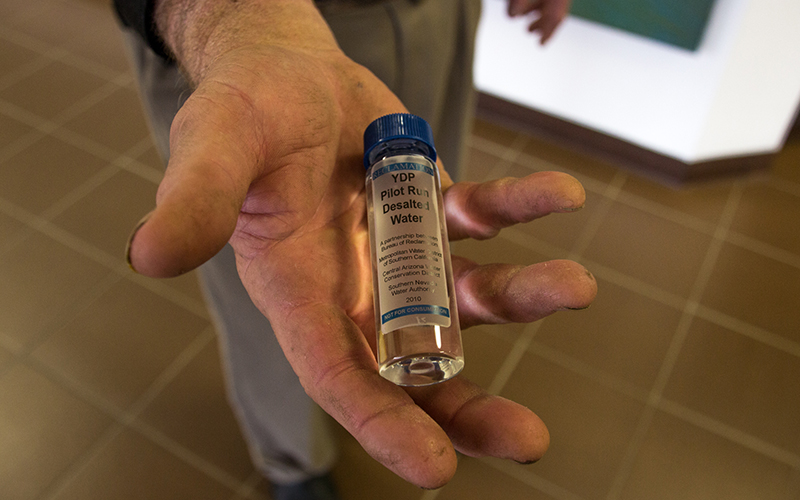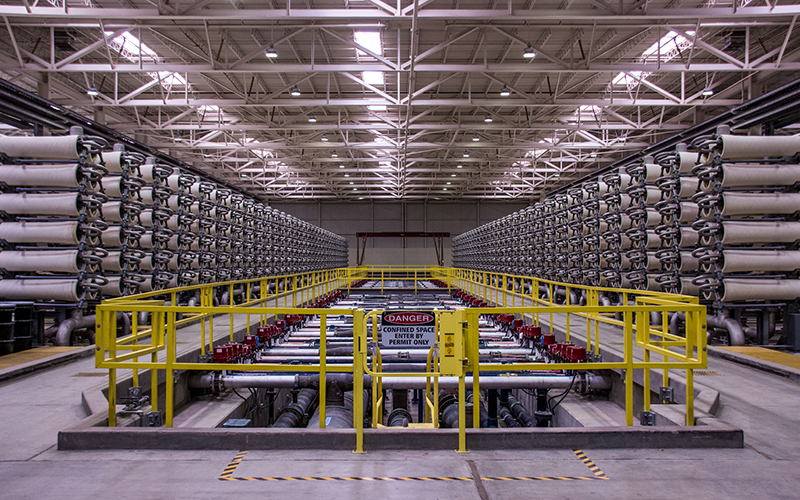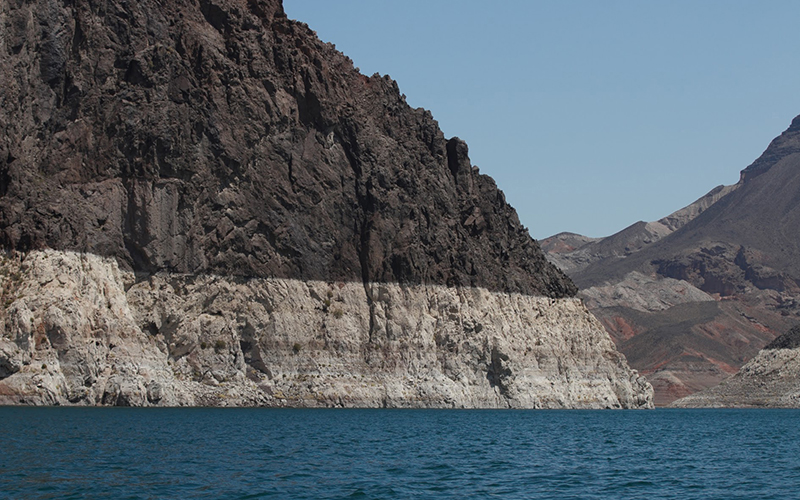YUMA – Anticipating years of drought, officials built the Yuma Desalting Plant in 1992 to treat agricultural runoff and conserve water in Lake Mead. Over the past 26 years, however, the plant has operated just three times while costing millions of dollars to maintain.
And it may need millions more, even to operate at a small fraction of capacity.
“The plant takes salty water from the agricultural drainage system, separates the salt … and generates clean water that it delivers to the Colorado River to Mexico,” explained Chuck Cullom, the Central Arizona Project Colorado Rivers programs manager.
The Yuma Desalting Plant is a joint project between the federal Bureau of Reclamation, the CAP and other water partners. It was intended to protect Arizona and other states that rely on Lake Mead, even during droughts, and replenish the Colorado River.
The plant cost $250 million in 1992, running briefly that year until a flood damaged some of the pipes. It currently is in standby status until Congress funds its operation. Meanwhile, it runs at 1/100 capacity while staff researches ways to improve efficiency.
“If we do receive funding to operate,” said Michael Norris, the Bureau of Reclamation deputy area manager at the plant, “we would be able to mobilize and get the plant to operating. … We currently have some capital improvement projects that need to be completed … it would take one to two years, up to three years.”
The plant could save about 90,000 acre-feet of water every year at full capacity, but Norris said it likely will operate at one-third capacity if funding comes through.
Getting the Yuma Desalting Plant to full capacity would cost more than $55 million, according to a CAP report.
“Very rare river habitats”
Although the desalinated water from the plant goes into the Colorado River, the brine that’s filtered out is pumped to the Cienega de Santa Clara, huge wetlands in northern Mexico.
Cullom said tests show the cienega (Spanish for “desert marsh”) would survive continuous operation of the plant, but plant repair estimates do not include the costs of environmental regulations and compliance.
The plant benefits the Colorado and Lake Mead, said Jennifer Pitt of the National Audubon Society, one of the world’s oldest conservation societies, but the briny waste might endanger the cienaga.
“You’re effectively continuing to send all the salt (to the cienaga) but sending less fresh water,” Pitt said. “There could be considerable negative impact to that wetlands, because the plants that grow there can only tolerate so much salt.
“I’m hopeful that there’s lots of ways we can conserve water and reduce shortage risks for water users without sacrificing what at this point are very rare river habitats. I really hope that would be our last solution rather than our first solution.”
– Cronkite News video by Nicole Hernandez
“The current technology of the plant is old technology”
Despite the potential risks and benefits, Collom said, the Bureau of Reclamation has never received sufficient money from Congress to run the Yuma plant.
“Every year the plant doesn’t operate, it contributes to a loss in Lake Mead. … If the plant had been operating since 2005, Lake Mead would be 15 feet higher than it is today,” he said.
CAP helped operate the plant in 2005 to demonstrate it still worked. A more recent test ran the plant a one-third capacity between 2010 and 2011. CAP and other water partners called it the “pilot run” – 18 years after the Yuma Desalting Plant’s construction.
“We viewed the 2010-2011 pilot operation as demonstrating that the plant can be successfully operated at a reasonable cost,” Collum said.
“The current technology of the plant is old technology. … To operate the plant for 30 or 40 years, we believe the plant would need some upgrades.”
A CAP report recommends fixing five plant “deficiencies” along with other repairs and replacements, necessary to run the plant even at one-third capacity. Repairs include replacing 80 percent of the plant’s high-pressure pipes, testing thousands of membranes that filter out the salt and fixing a railway that delivers sensitive supplies.
Norris, of the Bureau of Reclamation, is optimistic the Yuma Desalting Plant will receive funding and operate efficiently without damaging the environment.
“The biggest limitation would be funding,” he said. “Trying to get appropriated dollars on a year-to-year basis to sustain. Technology is the easy part, operating the plant is not a difficult process.”
This story is part of Elemental: Covering Sustainability, a new multimedia collaboration between Cronkite News, Arizona PBS, KJZZ, KPCC, Rocky Mountain PBS and PBS SoCal.
Follow us on Twitter.



